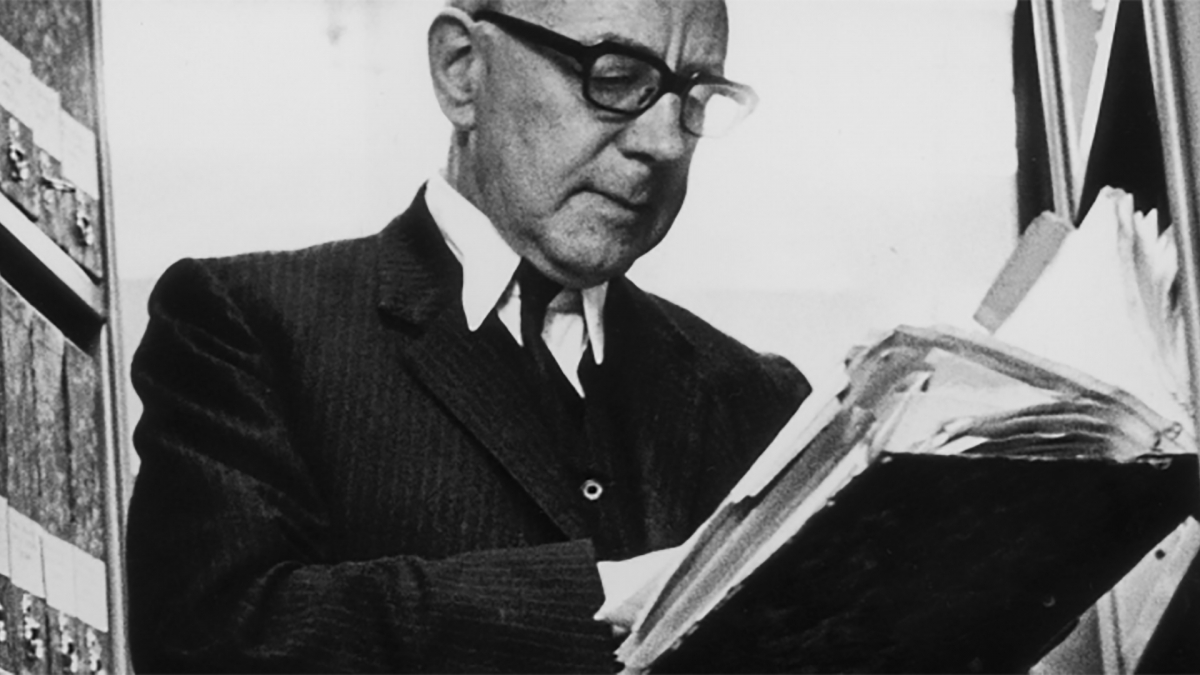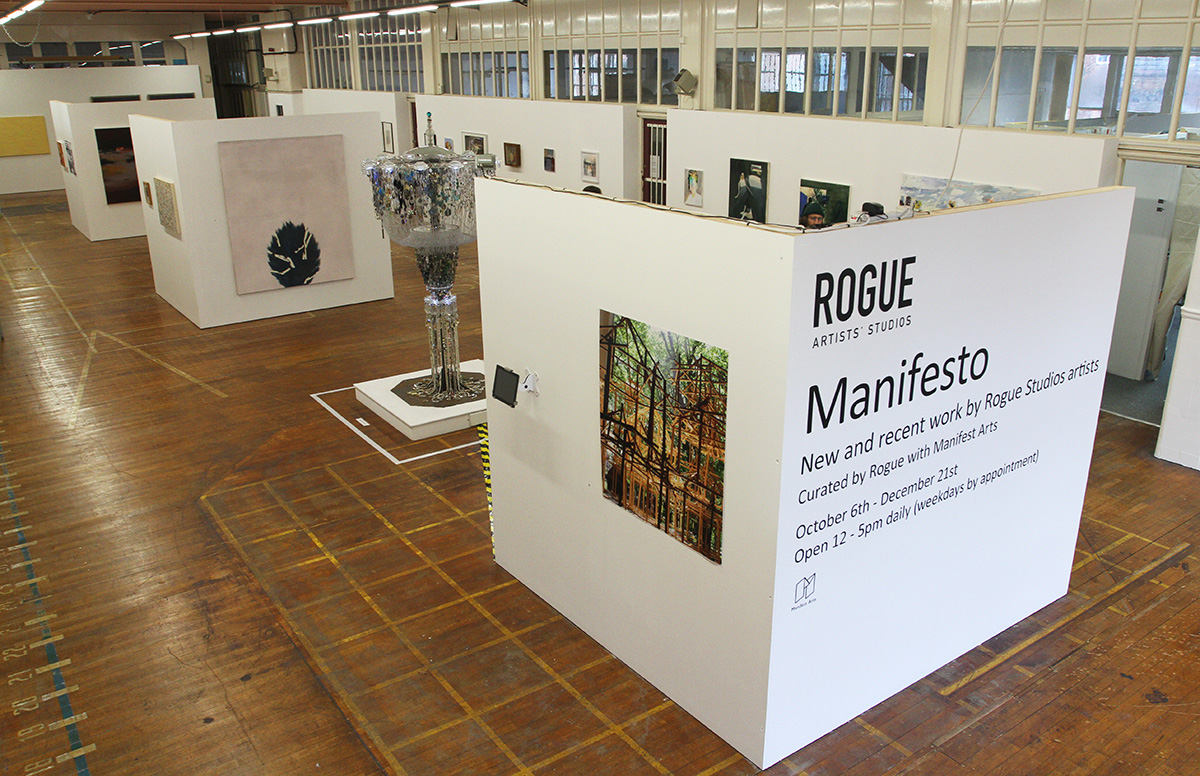This article was first published in the Oct/Nov 2018 ‘Place’ issue of Creative Review print edition. It is also available on the CR website under the title “Re-making Manchester”.

In 1957, the historian A.J.P. Taylor wrote in the New York Times that “Manchester is the only English city which can look London in the face, not merely as a regional capital but as a rival version of how men should live in a community”. Let’s put that in a more enlightened perspective. Manchester’s script owes as much to women like Elizabeth Gaskell and Emmeline Pankhurst as it does to Anthonys like Burgess and Wilson.
But there is no doubting that Manchester has spunk. It likes to think it has a way of doing things. As Tony Walsh says in his poem ‘This is the place’:
“if you’re looking for history then yes, we’ve a wealth, but the Manchester way is to make it yourself”.
That heritage – industrialisation, the cooperative movement, free trade, competitive sports, trade unions, suffragettes – speaks of a place that is radical and inclusive yet second to none in its commitment to enterprise. In Manchester, these qualities are seen also as key to its future, all name-checked in the strategies and development plans formulated by the City Council and the Combined Authority, representing all ten boroughs that make up Greater Manchester.
A city’s future depends as much on its capacity for reinventing itself as it does on its inherent character. The creative industries – most notably design and digital – are an engine of development, not least because they drive the tranformation of products, processes and services across all sectors. There are numerous examples of how the creative industries are contributing to Manchester’s regeneration, from the Northern Quarter with its design studios, bars and music venues, to the fintech cluster in Spinningfields and the digital reinvention of major businesses like the Co-op.
Designers and other creatives contribute to placemaking in different ways. Inward investment flows to places that are pleasant and navigable, with great culture, decent housing and good public services, to liveable places with local skills and ingenuity and a desire to succeed. Design thinking and creative skills are significant factors in creating that ecology for sustainable success. That this is working in Manchester is demonstrated by Chinese investment approaching £4bn in the last five years and the £1.3bn investment by Sheikh Mansour on top of his £125m acquisition of Manchester City FC a decade ago – in addition, more recently, to the Department for Work and Pensions, Jaguar LandRover, Lloyds Bank, Booking.com and Amazon among the national and world-leading organisations choosing to locate offices and “transformation teams” in the city.
But ensuring that the power of design is leveraged to help the city succeed over the long term is more challenging. The Wikipedia entry for ‘Northern Quarter (Manchester)’ states that it was “defined and named in the 1990s as part of the regeneration and gentrification of Manchester”. Linking to a separate piece about gentrification (“potentially forcing relocation of current, established residents and businesses… from a gentrified area, seeking lower cost housing and stores”), it neatly summarises one of the challenges often presented by creative-led regeneration. Can you make it work for the community?
The pattern of designers and artists moving into disused industrial warehouses creating a vibrant economy is nothing new. When Assorted Images (spawned in Manchester) opened the first of the new generation of design studios in Shoreditch in May 1983 – along with Artomatic screenprinters and the Strongroom recording studio – the area was an urban desert with zero nightlife, apart from the 24-hour bagel shop on Brick Lane. At the time, Hackney Council applied a strict interpretation of what was permissible in the type of B1 light industrial premises we occupied. This inhibited development of the area until planning policy and regulations were relaxed over the course of the ensuing decade. Designers and artists – Precious McBane, Kim West, Annie Symons, Judy Blame, Fric and Frack among them – continued moving in, stretching but ostensibly within the planning constraints. Once those were lifted, it was time for the property sector to move in. B1 warehouses became “New York-style lofts”, industrial units turned into “Live/Work spaces”. Firms like Stirling Ackroyd, Pilcher Hershman and Derwent played their part in creating an extraordinarily vibrant area from Shoreditch High Street to Clerkenwell via Hoxton Square: the area that is now home to Tech City. Today it is only bankers who think that Shoreditch is where it’s at. The creative new blood long since moved out to Bethnal Green, Dalston and Stoke Newington and is now emerging in places as distant as Tottenham, Peckham, Deptford and New Cross. Google and Facebook have placed their headquarters not in Shoreditch but in King’s Cross and Fitzrovia respectively.
The Manchester parallel is that the Northern Quarter, which became a thing from the 1990s, was foreshadowed by James and Elaine Walsh’s reinvention of the Oldham Street drapers Affleck & Brown as Affleck’s Palace in 1982: a workspace for startups with affordable rents and flexible contracts. Now run by Bruntwood, Affleck’s Palace is still home to more than 70 businesses. That, combined with seminal music venues like The Band on the Wall and the architecture dominated by industrial warehousing, made it a fertile location for design studios like Music and Instruct, architecture firms Hawkins\Brown and BDP, tech companies from Capsule CRM to Boohoo. Major property-led iniatives are happening either side of the Northern Quarter: the NOMA district to the North West, Piccadilly Basin and Mayfield to the South East, all aiming to attract creative and digital businesses.
How to ensure this supply of new blood is maintained as property becomes more expensive is a question that has come up year after year in The Great Debate, the public discussion about design and society that takes place annually in Manchester.
In 2015, the architect Dominic Sagar feared that the effect of welcome inward investment might be that accountants and corporate institutions end up designing the city. “We've had Madchester and Gunchester,” he said, “now I’m worried we might get Brandchester and Blandchester.”
The following year, the City’s planning chair Councillor David Ellison controversially asked whether planning is really needed for cities except in areas such as transport. Vibrant districts like the Northern Quarter, Chinatown and Rusholme, he pointed out, had never been planned. “It all comes down to what makes a creative city and what is a successful city,” he said. “Can it be planned, or is that not required?”
The gentrification dilemma was raised at the 2016 debate by the artist Zoë Hitchen (now UX delivery manager at the BBC), who reported that she and many fellow artists were being evicted from their studios. “As cities start to develop, the affordable creative spaces that lead to all this innovation and development are disappearing. Are you going to look at keeping a sustainable network of places in Manchester for creatives?”
If the role of design is defined only in terms of accelerating commercial development, then its disruptive function can diminish as the investment starts paying off in property values. Conscious of the broader value of creativity however, the city has actively developed a range of responses targeted at entry-level talent. Its investment in The Sharp Project has created a vibrant digital content hub, now home to more than 60 companies and launchpad of a dozen successful startups to date. Developers including Bruntwood and Allied London have partnered with the city to offer accelerator and incubator spaces in their coworking environments. The Co-op has established The Federation, a community of digital businesses built on ethical values. Most ambitiously perhaps, the city stepped in when the Rogue Artists’ Studios, a social enterprise offering low cost space, was in danger of losing its home in a textile mill due for redevelopment. Working closely with Rogue and their previous landlords, the developers Capital+Centric, the City Council made available the disused 57,000 sq ft Varna Street primary school buildings, which had been listed prior to demolition. Rogue Artists’ Studios, now the largest independent studio group in the North West with more than 85 artist tenants, moved into their new home a year ago. The City is continuing to work with them to access capital development funding, and if the model proves sustainable, this may open the way to further opportunities in the future.

Manchester sees design not just as an agent of change, but as central to the Manchester story. It was crucial to the success of textiles: the oldest undergraduate art school of the country was founded as Manchester School of Design (now Manchester School of Art) in 1837 to support the textile industry. It framed the post-punk popular culture in music and clubs in the 80s and 90s. It is at the fore today in driving the startup culture of microbusinesses, in digital innovation and in turning the science of graphene into usable products.
The city is now working with the design community and with industry to develop what it is calling the Manchester Design Manifesto, a longer-term programme that leverages the power of design and reinforces the perception of Manchester as a design city. Launched by Council Leader Sir Richard Leese at the Design Manchester Conference on 19 October, the programme explores how design can help the city deliver the objectives set out in its strategies, initially across ten areas:
Innovation drives economic growth now just as it did in the industrial revolution, and in the 1948 invention of the world’s first stored-program computer: the ‘Manchester Baby’. The combination of science, design and technology continues today as the beating heart of Manchester’s economy. Examples include “Eticlad”, a revolutionary cladding system developed for Manchester City’s Football Academy, and the new Graphene Engineering and Innovation Centre (GEIC) at Manchester University. Local fashion innovators 7L are creating advanced spacewear materials for the European Space Agency, following in the footsteps of Manchester’s P Frankenstein & Sons, who contributed to the development of space suits for NASA’s Apollo 11 moon landing. Following a textiles innovation symposium at last year’s Design Manchester festival, 7L is in discussion with the National Graphene Institute about the commercialisation of graphene-based materials. Design plays a key role in innovation, with more than four out of ten design-skilled workers engaged in the development of new ideas and problem-solving: the Manifesto programme will encourage innovation across all sectors.
Design in businesses and organisations. In global corporations and large organisations, design is entering the boardroom today much as marketing did in the 1970s. Apple, Google and Samsung see design as central to their corporate strategy. In the UK, Manchester has taken up that progression, with design-led transformation of significant companies like the Co-op, AutoTrader and Well Pharmacy. There is scope for sharing this best practice more broadly within the region and exporting it elsewhere.
Design and digital. Greater Manchester has an ambitious digital strategy but design is key to making digital work for the citizen and the consumer. The metropolis has the largest digital and creative cluster in the UK outside London, employing more than 80,000 people and generating GVA in excess of £4.1bn a year, with key assets including Media City UK and The Sharp Project. Design is central to growing this opportunity.
Future economy. The design, digital and wider creative sector described by Nesta as the motor of economic growth is 94.5% made up of startups and microbusinesses – defined as firms with fewer than 10 employees. Design is the most significant factor in this structural change in the economy (a Creative Review survey on behalf of Allied London last year showed that more than half the respondents in coworking spaces in Manchester identified as being “part of the design industry”). This is not a transient phenomenon. The challenge is to design long-term solutions to reduce barriers to entry and create space for unplanned disruption.
Future workplace. The Creative Industries Federation and Nesta have shown that over the next six years, creative occupations for the first time will grow at a faster rate (5.3%) than STEM subjects (5.1%), while both are more than double the average projected job growth as a whole. A coordinated approach between industry, the design community, the city and education providers is needed to support the continuing supply of relevant design skills and effective pathways for local talent through all routes of education and training.
Diversity. In design, more than nine out of every ten employees are white. In tech, it’s eight in ten. The gender balance in design is better – almost six in ten are male – though less so in senior roles, while in tech just one in five are female. In Greater Manchester, the proportion of BAME employees in the creative industries is 11% compared to 16% in the general population. There is much the design community and wider creative industries can do in Manchester to open the industry up to the best talent regardless of background, playing to the city’s strengths as an inclusive and diverse metropolis.
Inclusive design. Designers and researchers have long collaborated with the city and communities on Manchester’s Age-Friendly programme, now in its 15th year – part of the city’s commitment to improving services and the public realm for all users. Manchester-based organisations such as the Co-op and the BBC work with designers on aspects of inclusive design. One such is CAPE, a design initiative developed by the BBC to create a positive environment for employees with hidden cognitive or neurodivergent conditions such as autism.
Architecture and the public realm. The Manchester story is closely bound up with architecture. The regeneration of Hulme in the early 1990s highlighted the difference design can make for local communities. Apart from the many ambitious signature projects currently under way, from Circle Square to Gary Neville’s St Michael’s development and the Factory arts and culture centre – the emerging challenges and opportunities centre around public housing and schools, town centres and high streets around the region. An architecture innovation symposium at last year’s Design Manchester festival explored opportunities for a new ‘Manchester model’ for engagement and co-design with the community. One of the design challenges for Manchester is how to create more much-needed green spaces in the centre.
Transport and mobility. Greater Manchester Mayor Andy Burnham has been vocal in pushing for government action to build the Northern Powerhouse Rail links and greater control over regional rail and bus services. From a design perspective usability of the public transport network can be improved through integrated contactless ticketing and better multimodal transport and mobility information, including through IoT and open data, across all media and devices. There are opportunities for imaginative use of the transport estate, for example by creating cycle routes along disused tracks from outer districts of Greater Manchester to the city centre, and redevelopment of outlying rail stations to include community hub services. The approaching revolution in autonomous vehicles opens the way for designing new vehicles, ways of parking, and immersive entertainment.
Health and care. As part of its devolution settlement, Greater Manchester became the only region in England with control over its health budget, enabling it to develop integrated solutions for health and social care. This presents unique opportunities for digital design and innovation, but with an imperative to succeed. As researchers from Manchester University and the NHS National Institute for Health Research pointed out, the logic of this devolution relies heavily on the idea that “the health and social care system requires wholesale transformation as opposed to incremental change”. The challenges are huge: male and female life expectacy in Manchester are the second and third worst in the country respectively, according to the Office for National Statistcs. Manchester has to succeed where many “wholesale transformations” in health and care have failed, so there is a focus on promoting independence and “care in the connected community”, ensuring that tech solutions are user-centred, and creating environments that support well-being.
Some of the challenges and opportunities for creative placemaking described here are just as relevant in other cities. With this ambitious vision Manchester is shaping its own approach, with plenty of front and attitude. It’s designed to create a new rival version of a modern city, and of how people can live in a community.
Download the Manchester Design Manifesto scoping study.

